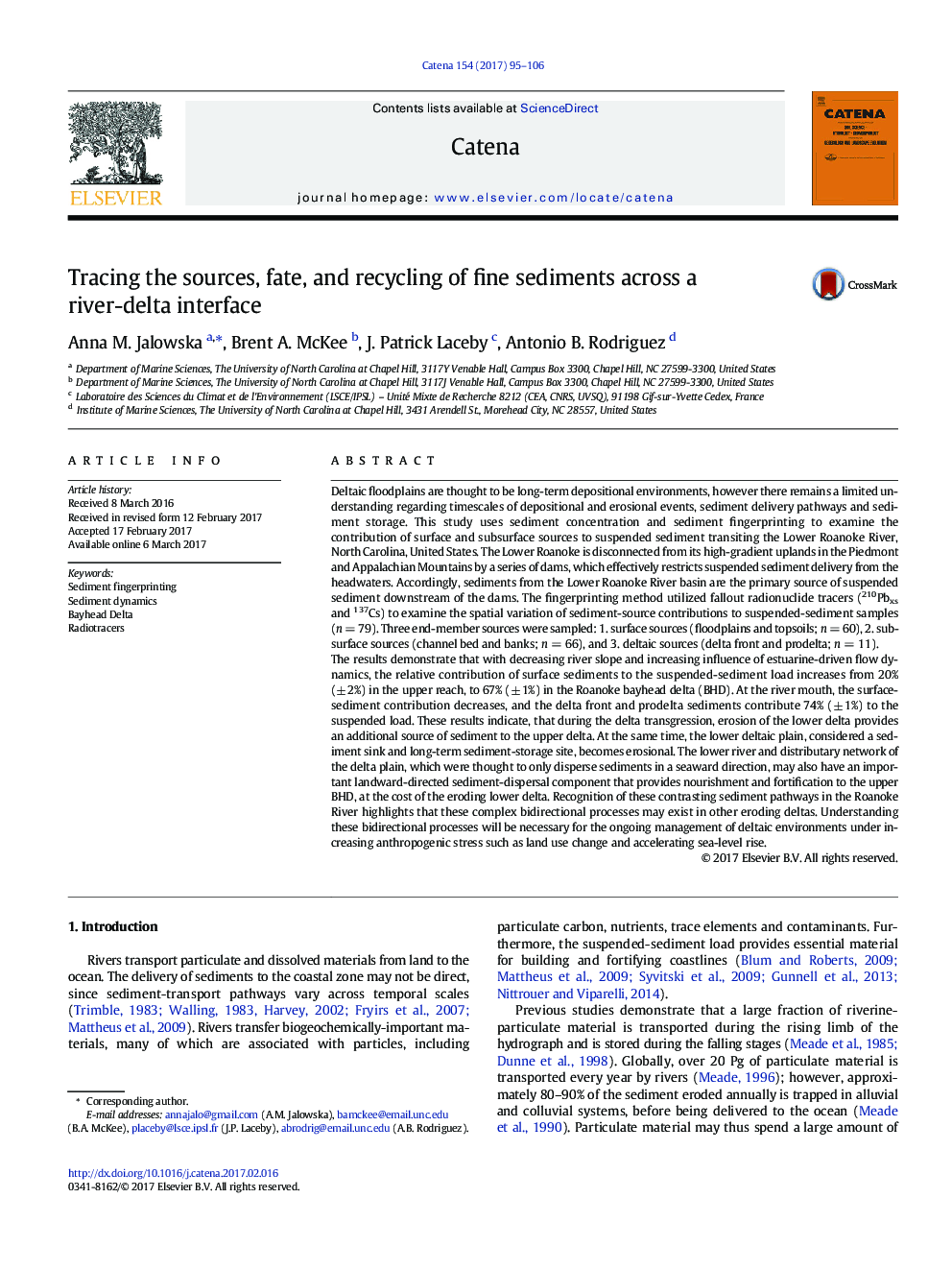| کد مقاله | کد نشریه | سال انتشار | مقاله انگلیسی | نسخه تمام متن |
|---|---|---|---|---|
| 5769935 | 1629200 | 2017 | 12 صفحه PDF | دانلود رایگان |
- Sediment fingerprinting showed changing sediment sources with a downstream gradient.
- Sediment transported by the river is not delivered to the delta.
- Eroded material from the lower delta is being recycled in the upper delta.
- Reprocessing of deltaic sediment is a possible way to cope with sea-level rise.
- Challenging the paradigm of upstream sources and downstream long term sinks.
Deltaic floodplains are thought to be long-term depositional environments, however there remains a limited understanding regarding timescales of depositional and erosional events, sediment delivery pathways and sediment storage. This study uses sediment concentration and sediment fingerprinting to examine the contribution of surface and subsurface sources to suspended sediment transiting the Lower Roanoke River, North Carolina, United States. The Lower Roanoke is disconnected from its high-gradient uplands in the Piedmont and Appalachian Mountains by a series of dams, which effectively restricts suspended sediment delivery from the headwaters. Accordingly, sediments from the Lower Roanoke River basin are the primary source of suspended sediment downstream of the dams. The fingerprinting method utilized fallout radionuclide tracers (210Pbxs and 137Cs) to examine the spatial variation of sediment-source contributions to suspended-sediment samples (n = 79). Three end-member sources were sampled: 1. surface sources (floodplains and topsoils; n = 60), 2. subsurface sources (channel bed and banks; n = 66), and 3. deltaic sources (delta front and prodelta; n = 11).The results demonstrate that with decreasing river slope and increasing influence of estuarine-driven flow dynamics, the relative contribution of surface sediments to the suspended-sediment load increases from 20% (± 2%) in the upper reach, to 67% (± 1%) in the Roanoke bayhead delta (BHD). At the river mouth, the surface-sediment contribution decreases, and the delta front and prodelta sediments contribute 74% (± 1%) to the suspended load. These results indicate, that during the delta transgression, erosion of the lower delta provides an additional source of sediment to the upper delta. At the same time, the lower deltaic plain, considered a sediment sink and long-term sediment-storage site, becomes erosional. The lower river and distributary network of the delta plain, which were thought to only disperse sediments in a seaward direction, may also have an important landward-directed sediment-dispersal component that provides nourishment and fortification to the upper BHD, at the cost of the eroding lower delta. Recognition of these contrasting sediment pathways in the Roanoke River highlights that these complex bidirectional processes may exist in other eroding deltas. Understanding these bidirectional processes will be necessary for the ongoing management of deltaic environments under increasing anthropogenic stress such as land use change and accelerating sea-level rise.
263
Journal: CATENA - Volume 154, July 2017, Pages 95-106
